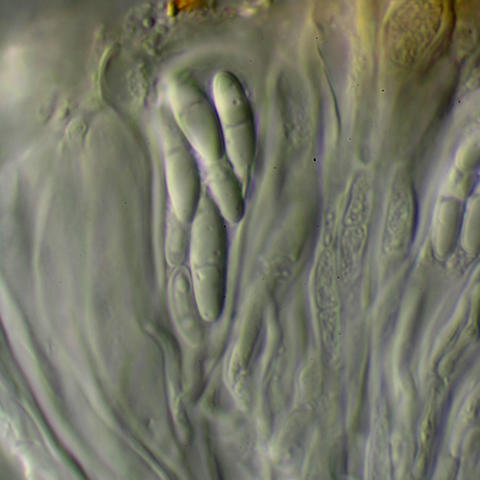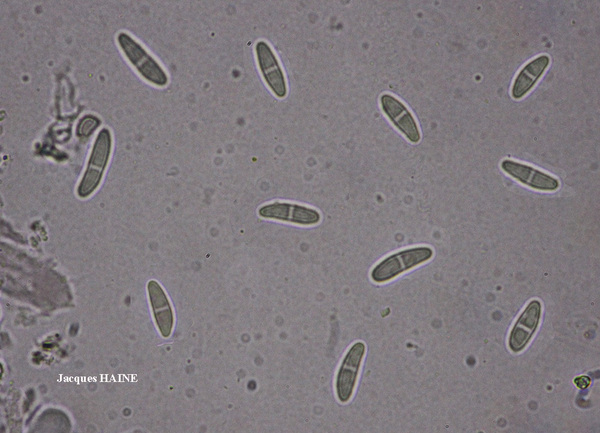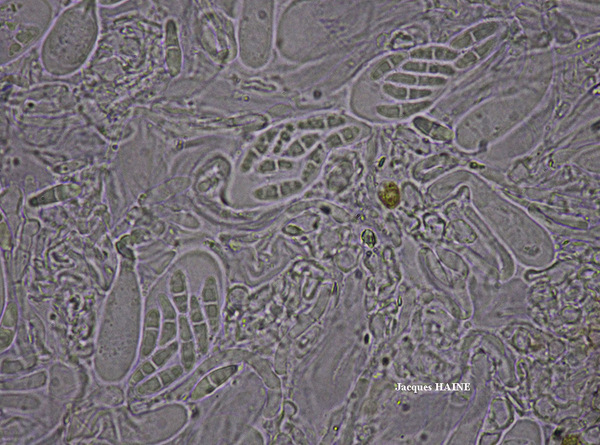Lecania hutchinsiae (Nyl.) A.L. Sm.
Monogr. Brit. Lich., 1: 348, 1918. Basionym: Lecanora hutchinsiae Nyl. - Flora, 50: 326, 1867.
Synonyms: Lecaniella hutchinsiae (Nyl.) S.Y. Kondr.
Distribution: S - Cal (Puntillo 1996).
Description: Thallus crustose, thinly episubstratic, continuous to more rarely rimose-areolate, dull grey, pale brown or ochraceous, the marginal parts of the 0.2-0.5 mm wide areoles sometimes paler, without a distinct prothallus. Apothecia lecanorine when young, but mostly appearing biatorine, usually numerous, scattered or clustered, 0.3-0.5(-0.6) mm across, sessile, with a pinkish yellow to red-brown (translucent when wet), sometimes finally blackening, markedly convex disc, a thin, very soon excluded thalline margin, and a more or less distinct proper margin. Thalline exciple corticate only at the base, with a few algal cells in basal parts; proper exciple well-developed, colourless to very pale brown in upper part; epithecium colourless to pale yellowish brown; hymenium colourless, 40-60(-70) µm high; paraphyses simple or sparingly branched in upper part, the apical cells not distinctly swollen; hypothecium colourless. Asci 8-spored, narrowly clavate, with a K/I+ blue tholus and a central non-amyloid area, Bacidia-type. Ascospores 1-septate, hyaline, ellipsoid, 9-14(-16) x 3-4.5 µm, without a gelatinous perispore. Photobiont chlorococcoid. Spot tests: K-, C-, KC-, P-, UV-. Chemistry: without lichen substances. Note: a Mediterranean-Atlantic lichen found on periodically wetted or immersed siliceous rocks, especially sandstone, in sheltered situations, mostly at low elevations; overlooked in Tyrrhenian Italy, but not common.
Growth form: Crustose
Substrata: rocks
Photobiont: green algae other than Trentepohlia
Reproductive strategy: mainly sexual
Most common in areas with a humid-warm climate (e.g. most of Tyrrenian Italy)
Periodically submerged (e.g. in creeks)
Commonnes-rarity: (info)
Alpine belt: absent
Subalpine belt: absent
Oromediterranean belt: absent
Montane belt: absent
Submediterranean belt: absent
Padanian area: absent
Humid submediterranean belt: very rare
Humid mediterranean belt: very rare
Dry mediterranean belt: absent
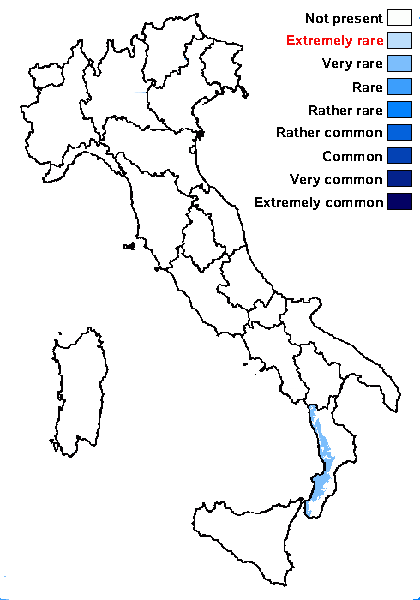
Predictive model
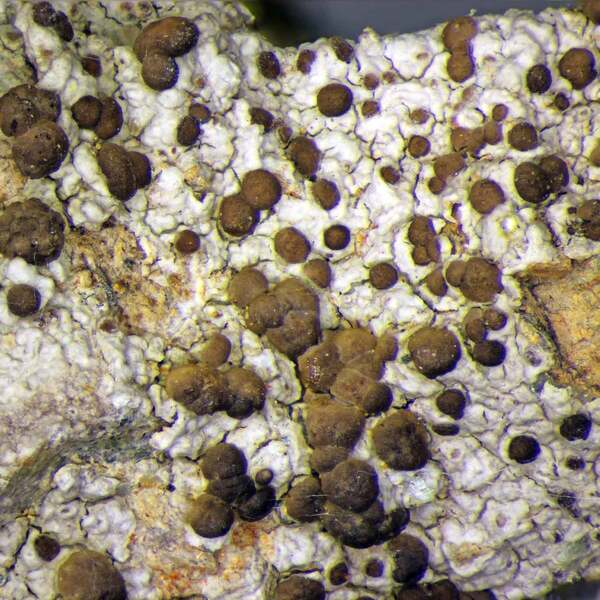
Photo uploaded by Paul Cannon - CC BY-SA NC - Source: http://fungi.myspecies.info/all-fungi/lecania-hutchinsiae
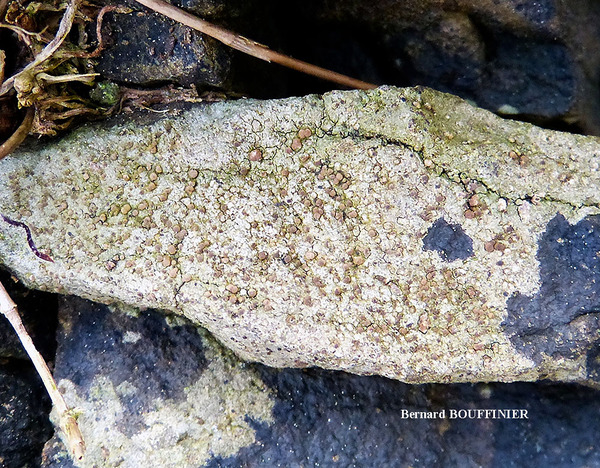
Bernard Bouffinier - Source: http://www.lichensmaritimes.org/index.php?task=fiche&lichen=929&lang=en
France, Le Loc'h
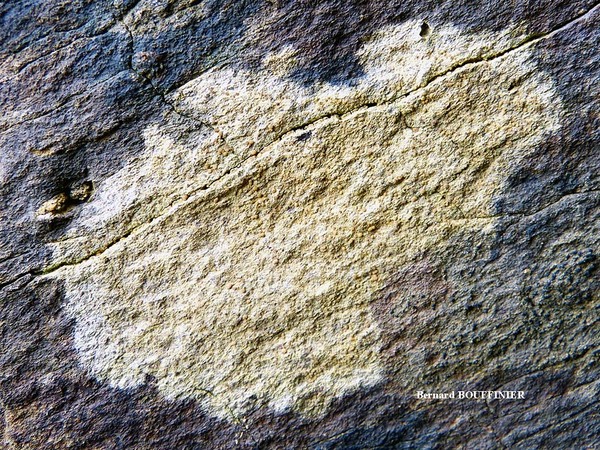
Bernard Bouffinier - Source: http://www.lichensmaritimes.org/index.php?task=fiche&lichen=929&lang=en
France, Le Loc'h
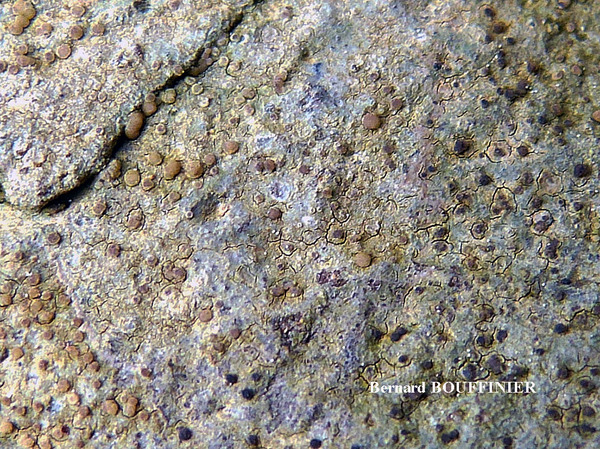
Bernard Bouffinier - Source: http://www.lichensmaritimes.org/index.php?task=fiche&lichen=929&lang=en
France, Le Loc'h
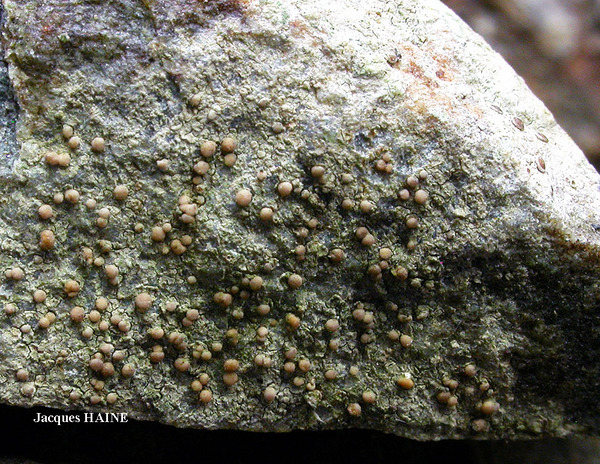
Jacques Haine - Source: http://www.lichensmaritimes.org/index.php?task=fiche&lichen=929&lang=en
France, Landevennec
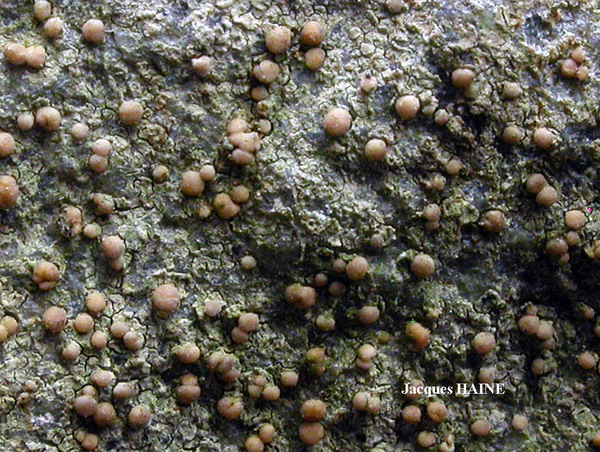
Jacques Haine - Source: http://www.lichensmaritimes.org/index.php?task=fiche&lichen=929&lang=en
France, Landevennec
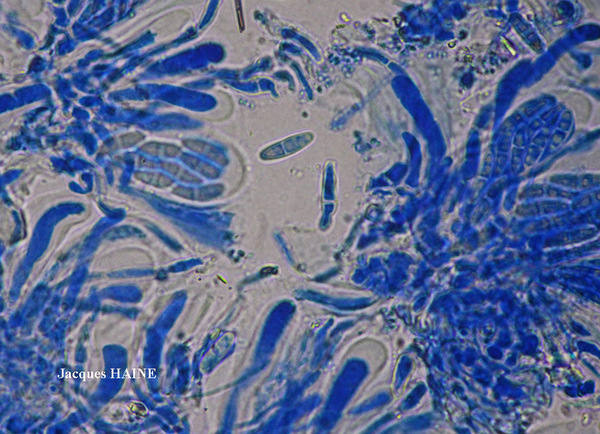
Jacques Haine - Source: http://www.lichensmaritimes.org/index.php?task=fiche&lichen=929&lang=en
France, Landevennec
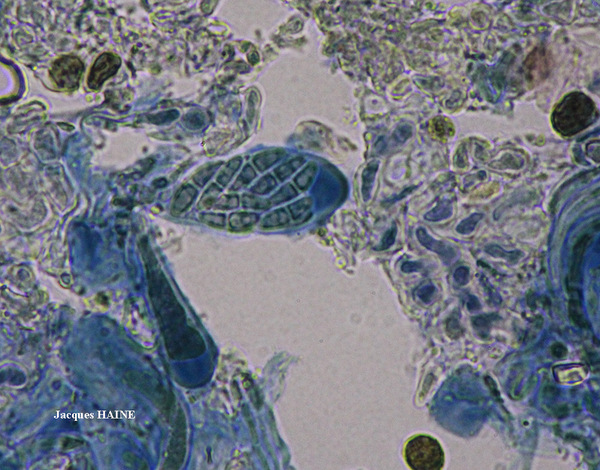
Jacques Haine - Source: http://www.lichensmaritimes.org/index.php?task=fiche&lichen=929&lang=en
France, Landevennec
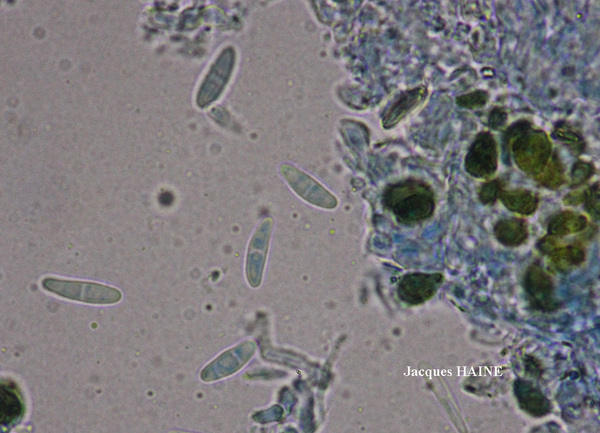
Jacques Haine - Source: http://www.lichensmaritimes.org/index.php?task=fiche&lichen=929&lang=en
France, Landevennec
Growth form: Crustose
Substrata: rocks
Photobiont: green algae other than Trentepohlia
Reproductive strategy: mainly sexual
Most common in areas with a humid-warm climate (e.g. most of Tyrrenian Italy)
Periodically submerged (e.g. in creeks)
Commonnes-rarity: (info)
Alpine belt: absent
Subalpine belt: absent
Oromediterranean belt: absent
Montane belt: absent
Submediterranean belt: absent
Padanian area: absent
Humid submediterranean belt: very rare
Humid mediterranean belt: very rare
Dry mediterranean belt: absent

Predictive model

Photo uploaded by Paul Cannon - CC BY-SA NC - Source: http://fungi.myspecies.info/all-fungi/lecania-hutchinsiae

Bernard Bouffinier - Source: http://www.lichensmaritimes.org/index.php?task=fiche&lichen=929&lang=en
France, Le Loc'h

Bernard Bouffinier - Source: http://www.lichensmaritimes.org/index.php?task=fiche&lichen=929&lang=en
France, Le Loc'h

Bernard Bouffinier - Source: http://www.lichensmaritimes.org/index.php?task=fiche&lichen=929&lang=en
France, Le Loc'h

Jacques Haine - Source: http://www.lichensmaritimes.org/index.php?task=fiche&lichen=929&lang=en
France, Landevennec

Jacques Haine - Source: http://www.lichensmaritimes.org/index.php?task=fiche&lichen=929&lang=en
France, Landevennec

Jacques Haine - Source: http://www.lichensmaritimes.org/index.php?task=fiche&lichen=929&lang=en
France, Landevennec

Jacques Haine - Source: http://www.lichensmaritimes.org/index.php?task=fiche&lichen=929&lang=en
France, Landevennec

 INDEX FUNGORUM
INDEX FUNGORUM
 GBIF
GBIF
